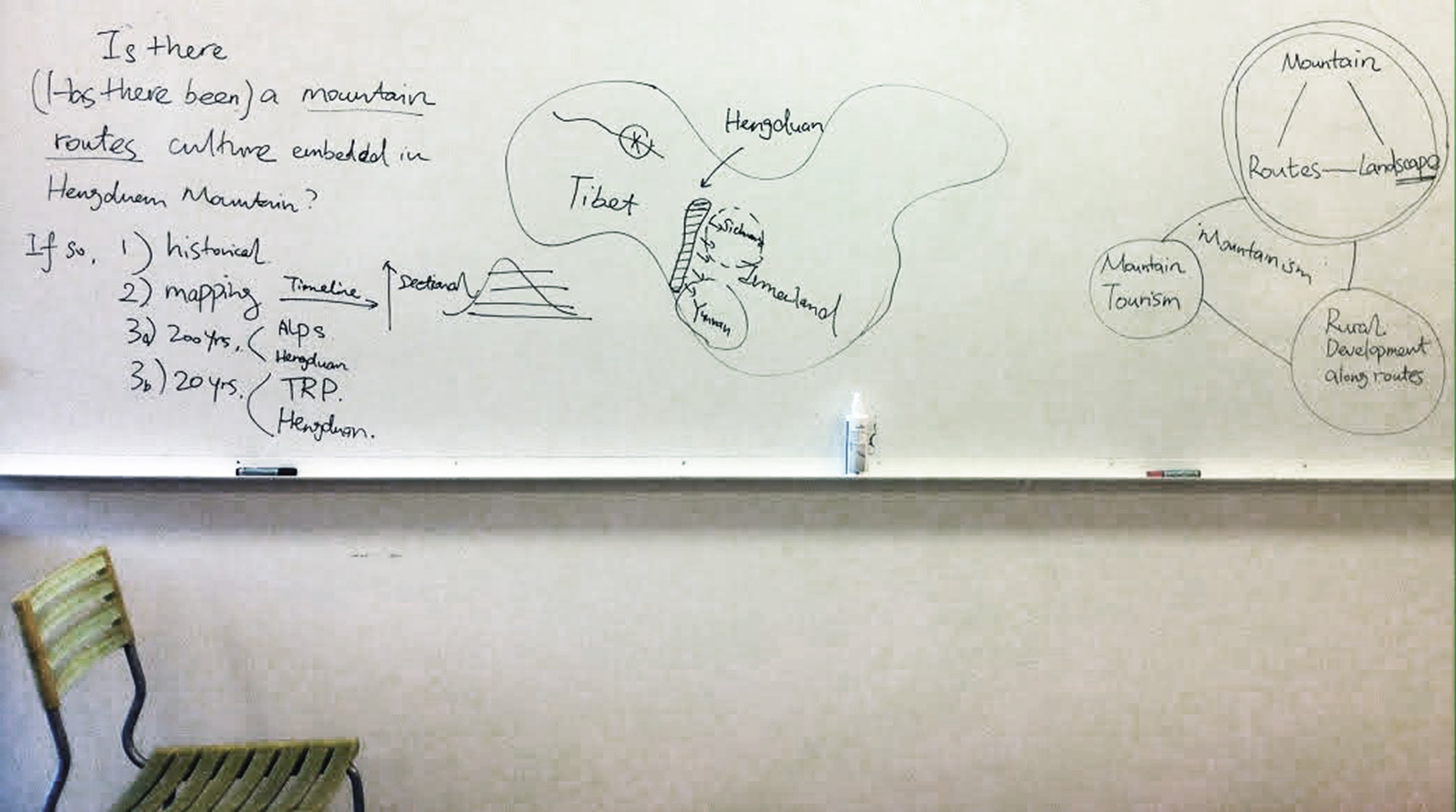Bin Li Trekking and Alpine Landscape
Chinese high cold mountains had long been hinterlands of the country, blank spots on a map, mysteries in a literature. While Swiss and Norwegians started to appreciate tough beauty of high mountains and introduced to people with landscape representation, Chinese made few glimpses to its high mountains. Instead, early explorers - botanists, cartographers, geologists and mountaineers attempted to read high landscape through scientific lenses. One of the stories is Mount Gongga, the highest peak of Hengduan mountain range, embedded expeditions in 1930s by Eduard Imhof, Arnold Heim, Josef Rock, and Richard Burdsall - chasing floras, measuring the height, summiting the peak. They collected material and represented high landscape with literature, photos, paintings, maps and arboretum. Nowadays more and more Chinese amateur trekkers, with leisure, animal watching and photography interests, are traveling to Gongga and other part of Hengduan. Limited environmental and aesthetical landscape representations can these amateur explorers obtain before departure; Few guidance and limitation can them receive after arrival. Meanwhile, researchers and conservationists work on maintaining high mountain ecology; residents see their mountain as place of worship and resource. High cold mountain now is an open museum, abundant and vulnerable, lack of careful curating, and is under new pressure of disorganizing and fragmentation. If landscape architects take a role as contemporary explorer and curator, use landscape representation as tool, can Chinese high landscape be curated, so to organize mountain space for people who are visiting and living in mountain area? To answer the question in a process, this PhD thesis will be article based, refer to Swiss and Norwegian precedent, take Gongga of Hengduan mountain as a case. The first stage article describes the phenomenon, the reference and the problem. The second stage article reveals current high landscape situation through landscape expedition and representation. The third stage article discusses high mountain space alternatives with landscape representation. Three workbooks associated with the articles document the researching and searching process. The research goal is to create an alternative model for representing and reorganizing Chinese high mountain landscapes.
Institute of Urbanism and Landscape / Karl Otto Ellefsen (Supervisor)
PhD started in 2015

